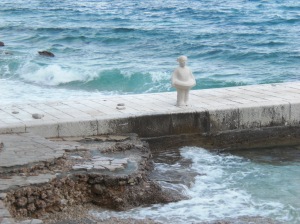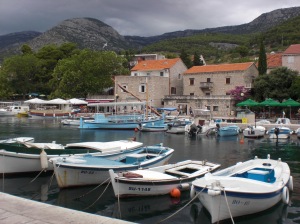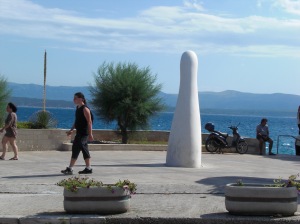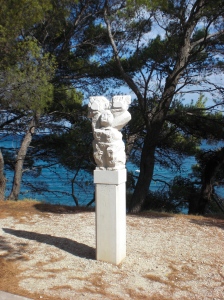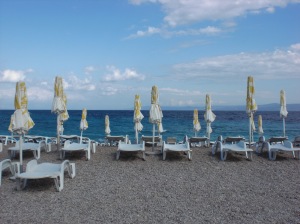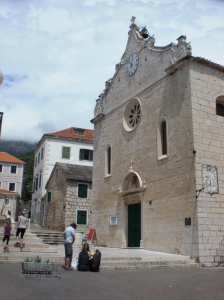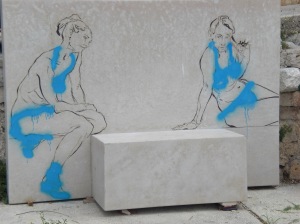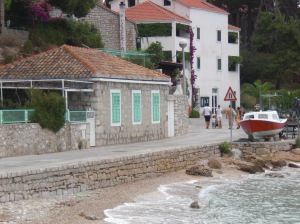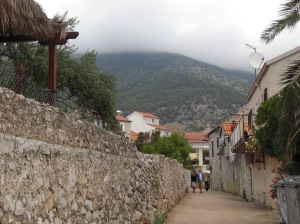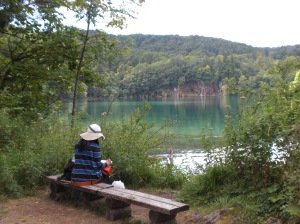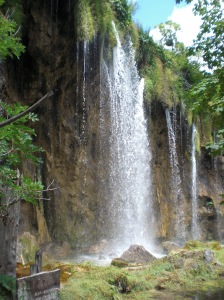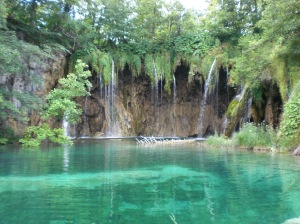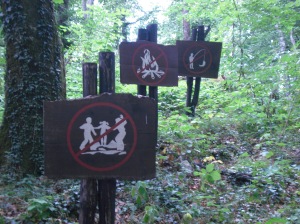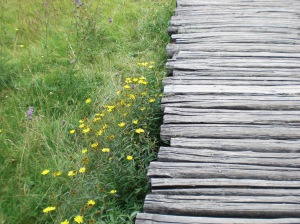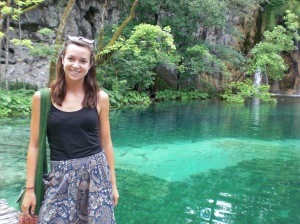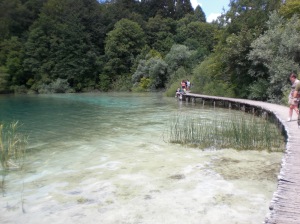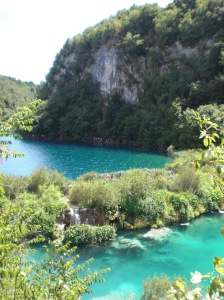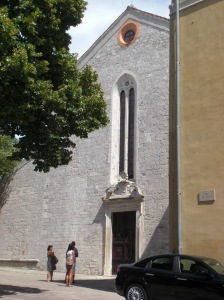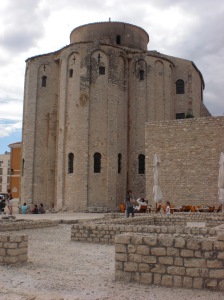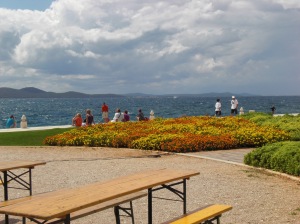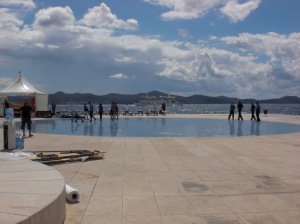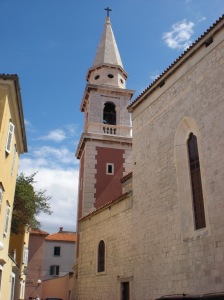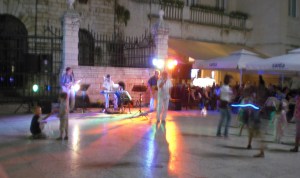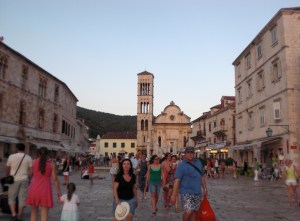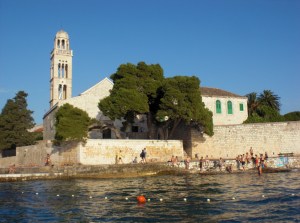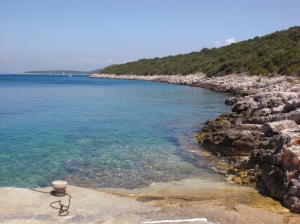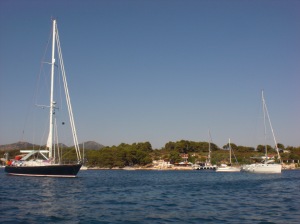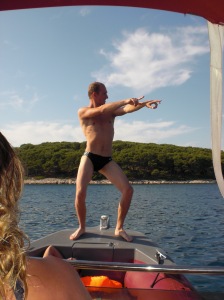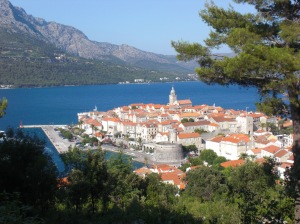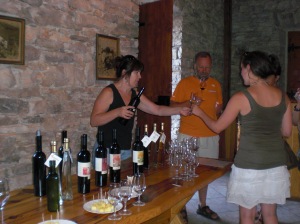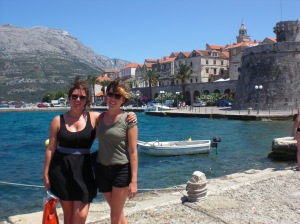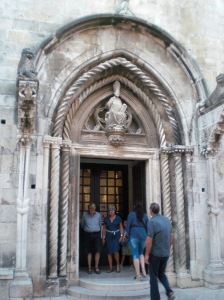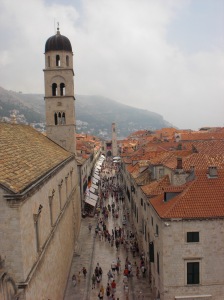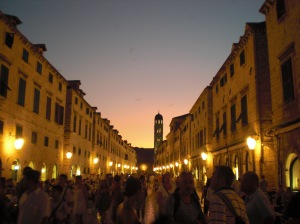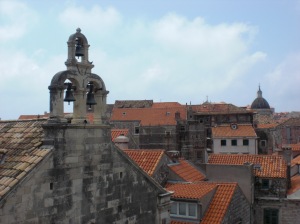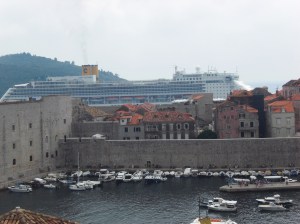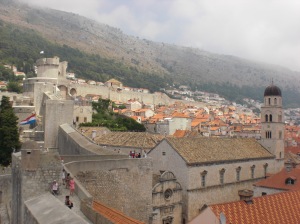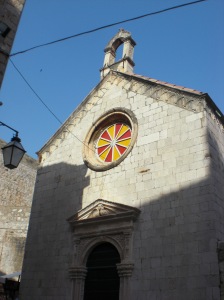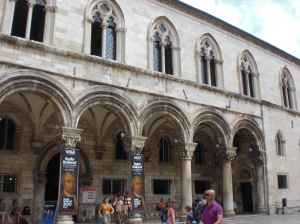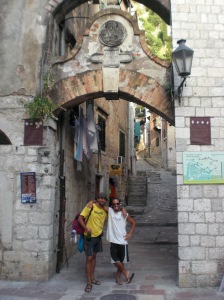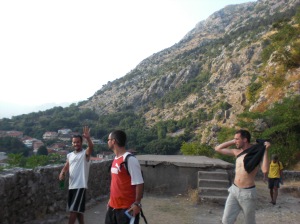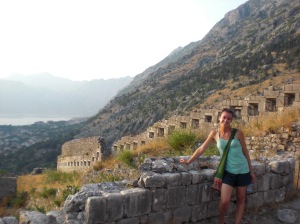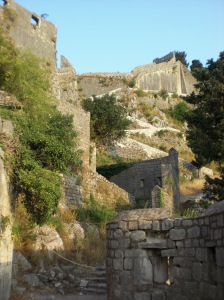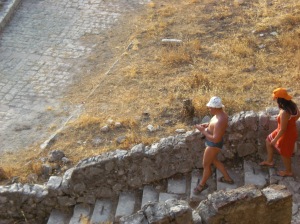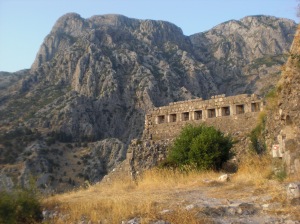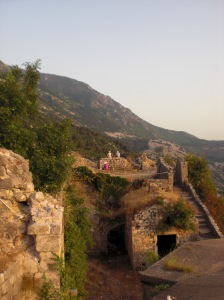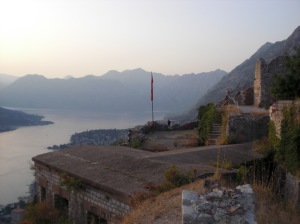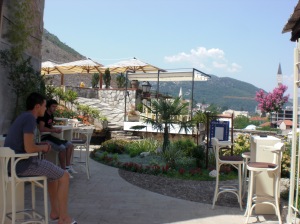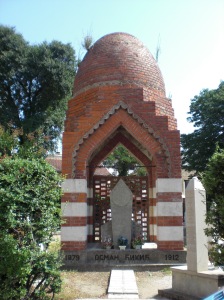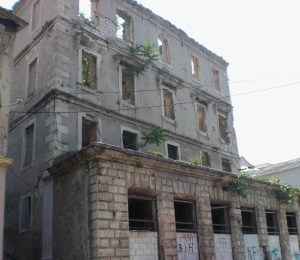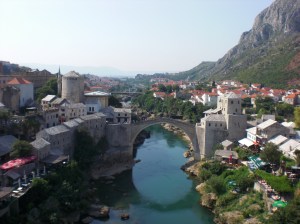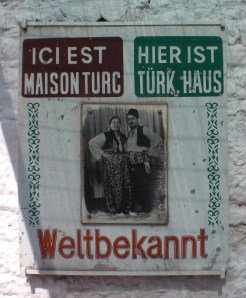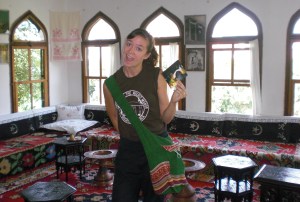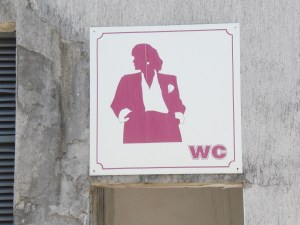7.14.2011

On the Road. The bay of Kotor
The sun was setting, affording a gold-tinged view of the the many coastal towns we passed on the bus ride from Dubrovnik to Kotor. The bus was only half-full, most passengers seemed to be backpackers and other youngish commuters. I was excited to have an open seat next to me, since I’d now have ample room to type and edit my photos. However, at the very last moment, a deeply tanned messy-haired boy asked if he could sit down. I didn’t know how to say no and still be polite, so I said “Sure thing.” He and his friend spoke Spanish while they took long swigs from a plastic beer bottle filled with some clear liquid. After spending the day in Mostar more-or-less alone, I was still in intrinsic mode and not ready to engage in random conversation. Eventually, as we reached the border and pulled out our passports, my seatmate and I got to talking. Surprisingly, Victorio from Buenos Aires and I, had a lot of common interests—he was an engineer and an actor who took singing lessons and was an active couchsurfing.org member. He and his motor-mouthed friend Nico, were starting their trip around Croatia and ending wherever the wind would take them. They had a ‘camp where you can’ motto. “Last night we slept in the grass in front of a radio station.” Vittorio told me. We ended up chatting for the remainder of the trip and I made plans to grab a drink with them after they found a ‘campsite’ that evening.

On the way to the Old Town in the Bay of Kotor
That night, as we arrived at the bus station, a challenge awaited me: I was going to try to rent a room from a local. This was quite a common thing to do in places where hostels are scarce. In fact, friends and other travelers had told me it was more or less the way to go, since you have your own room and typically pay less than overpriced hostels. As we got off of the bus, several people were trying to do the same thing, and a friendly young girl volunteered to translate for a French guy and myself. As she haggled with an older woman, the conversation seemed to be turning into more of an argument. The woman didn’t want me to stay in her old town apartment because I would only be there one night. Who cared, it was already 11pm! She was trying to convince me to go with her to another house outside of the center for 15 euro, which I did not want to do. The French guy and I were stuck in the middle of the argument, trying to interject. Soon he signaled to his friend and told me, “My friend is talking to a lady there, she has 3 rooms for 10 euro. You are welcome to come with us.” Done. This process had been more stressful than I had anticipated. Soon we were following this middle-aged woman to her house in an apartment complex nearby.
We had no way to communicate with our host, save a variety of hand gestures and loudly repeated English words, spoken mainly with thick French accents. She showed us to our room: three beds squashed in a spare bedroom. The guys seemed a bit embarrassed.
“I thought she said separate bedroom’ one told me. “Should we make a…em…a division here?” he indicated, using his hands to fictionally separate the space between my bed and theirs. Until this point, I had been staying in 8 and 10 bed hostel dorms, so sharing a room with only 2 other people was a luxury. I did feel a bit bad for unexpectedly intruding on their 10-day best buddy holiday, but whatever. C’est la vie. As we got to know each other, I learned that they are both sports journalists, working in their respective French towns. Remi spoke an accent-free English, and Gregory struggled a bit, but was definitely better than he thought. We went out to dinner in the old town at local restaurant called Kantun in the Bokeljske Mornarice square.
The town was a walled-beauty and surprisingly empty for a Wednesday evening. The bar across the square was blasting techno music to an empty house, which I found annoying. Who did they think they were fooling? The food I ordered was amazing: traditional home-made sausages with onions, french fries and vegetables. I tasted Remi’s Montenegran smoked ham dish, which was similar to a thicker and smokier prosciutto, and also delicious. My meal had cost only 6 euro and was so massive that I couldn’t manage to finish.

I couldn’t resist documenting this.
Our host offered us coffee the next morning, Turkish style again. It was very kind of her. She sat with us and showed us a book that seemed to be about religious relics. As we passed it around, Remy speculated that she was trying to tell us about the place where she was born. Not being able to communicate with verbal language was a bit challenging, and when the boys indicated they wanted to stay another night, it was pretty hilarious. As Gregory repeated in English ‘We stay here tonight….leave tomorrow’, she just kept saying “moje, moje” with a blank look and that “I have no idea what you’re saying” smile. I think moji (not sure of the spelling) means something like ‘ok’ or ‘alright’ in Serbo-Croatian it still wasn’t clear that she totally understood. Gregory was cracking up, and finally he told me it sounded like she was repeating the word moche (ugly) in French.

The next day, we headed into the town, which was picturesquely situated between high mountains on the bay of Kotor.
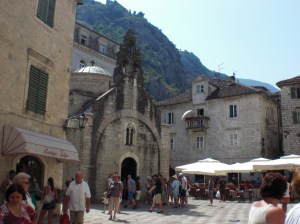
Inside the city walls

The guys invited me to join them on a guided tour ala their French guidebook. Gregory decided to practice his English by translating the tour for me, which was a real treat. He stopped to point out buildings, telling me slightly lost-in-translation things like “this is the old town hall. She was before filled with sugar and cookies.” Our tour took us to St. Tryphon, a cathedral with two bell-towers, one of which remains unfinished and is significantly shorter than its counterpart.
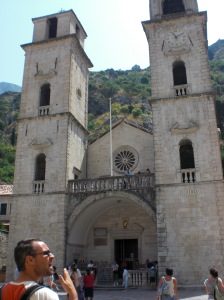
St. Tryphon’s Cathedral
“Sarah, over here” called my guide, squinting at his guidebook and pointing at the church. “I would like to show you this important building. It is best if you stand back and take a recul so you can see it is not even”
A recul?
“A view from far away!” chimed in Remy, chuckling.

Watch out Pisa! There’s a leaning clock tower in Kotor
Gregory was really getting into his role as tour guide, saying things like “Right theese way I would like to point out the special window,” or “Sarah, pay attention! She is very important.”
Whilst we were mid-guidebook, I spotted my Argentinian friends slumped next to the side of the church. They were as scraggly as ever with tired, red eyes and breakfast of grocery store snacks splayed about. It looked like they had had a rough night. Victorio offered me an orange-chocolate cookie as I greeted them.
“We slept on a road not too far from the station.” he explained.
“Can we join you?” asked Nico. I looked at Gregory, not wanting to invite these ragamuffins without his consent. He shrugged with a French je ne sais quoi.
“I’m kind of on a tour right now…but sure, come along.”

This building was deemed ‘tres jolie’ by the french
The five of us hung out for the rest of the day. It was a funny group: the self-proclaimed hyperactive Nico, his best buddy Victorio and the significantly more reserved and put-together duo of Remy and Gregory. Lots of Spanish and French speaking going on.
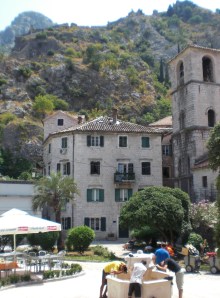
Thank God for public drinking fountains on HOT days
Nico liked to call attention to the scantily-clad (and very beautiful) Montenegrin girls. He wasn’t shy:
“I have to see this clothing store, wait one second!” he announced. I looked at his cut-off t-shirt, which was probably going on day five without a wash and didn’t believe for a second that he was about to go on a shopping spree. Not surprisingly, as I peeked in the store, I noticed a beautiful high-heeled girl in a low-cut top folding shirts.
“Si, bueno, perfect. Yes, those are very nice clothes in there….very nice” said Nico.
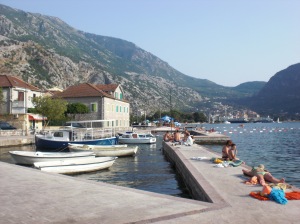
It looks better than it smells.
The gang was dripping sweat, so we made our way to the bay for a swim. This was not my idea, as I had read in several places that the water is polluted pretty badly. However, locals insisted it was fine, and we saw many families and children enjoying the water. “It’s disgusting!” said Nico smiling as he paddled around. Everyone who jumped in after wards agreed. “I will not go. It stinks” said Remy, agreeing with me.

“Si, the water is like a lotion!” said Victorio once he got out. I cringed as he rubbed his skin, massaging the toxins into his thighs. I’m pretty sure I noticed a third eye growing from his back later that day.


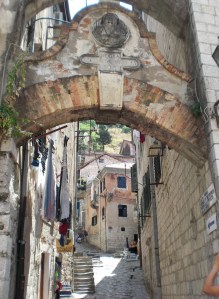
One of the entrances to the fortress
Eventually we ended the day with a grueling hike up to the fortress, see: Climbing the Stairway to Heaven (It’s in Kotor!)
Tags: backpacking, Balkan Countries, budget travel, Eastern Europe, Kotor, Montenegro


